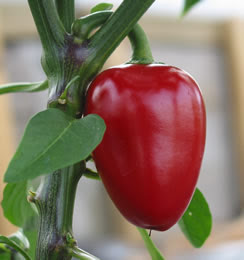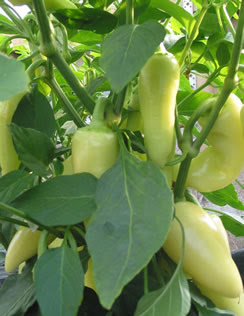 Get Advice.
Get Advice. Chillies can be very variable in heat, so if the recipe you are cooking calls for a 'hot red chilli', how do you know that you are buying one? Well, if you're buying online, you should be able to get some help via email or a phone call, but it you are at a market/shop, getting advice may be harder.
Have A Taste. Provided you can access the chillies without committing yourself to an entire bag of them, take a chilli, place it in a bag of some sort, and break it open. Reach into the bag and wipe a finger on the area with the seeds; then lick your finger. You may need to wait a few seconds to decide, but it you don't get the heat or flavour you're looking for, try another type.
Selecting From Many. The 'lick-a-finger' test can also be handy if you have a selection of chillies to choose from at home, and want to taste a few to remind yourself of the flavour and heat to help you pick the right one for the dish. Take care to wash your hands before you inadvertently rub your eye.
Same Chilli, Variable Heat! If you are growing chillies, you may have noticed that chillies from the same bush can vary greatly in heat - and certainly chilli plants of the same variety grown in different environments (some in a greenhouse, some outside) will vary. If you want a milder chilli, pick them early in their development - before the seeds form.
Dried, Fresh or Prepared? How do you know when you've added enough chilli? Fresh and dried chilli can take a little while to cook-in to the recipe, so give it some time; a hot chilli sauce tends to be a quicker option. Many Mexican recipes call for a mixture of fresh and dried, and sometime include smoked or pickled chillies as well. Dried chillies have a very different flavour when compared to the fresh form, so you can add a greater depth of flavour if you add fresh and dried. Note that a dried chilli is something like one tenth of the weight of the fresh pod - you may find that useful when experimenting with measurements of fresh and dried.
 Get Advice. Chillies can be very variable in heat, so if the recipe you are cooking calls for a 'hot red chilli', how do you know that you are buying one? Well, if you're buying online, you should be able to get some help via email or a phone call, but it you are at a market/shop, getting advice may be harder.
Get Advice. Chillies can be very variable in heat, so if the recipe you are cooking calls for a 'hot red chilli', how do you know that you are buying one? Well, if you're buying online, you should be able to get some help via email or a phone call, but it you are at a market/shop, getting advice may be harder.


